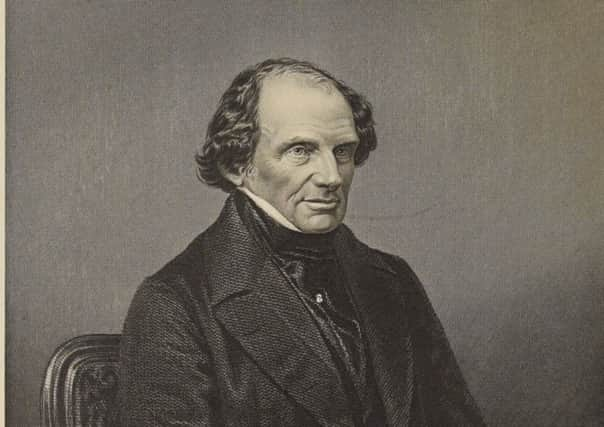The Prime Minister from Bedfordshire part two


He had been in Parliament for just under 40 years, but his time as Prime Minister had just ended after six largely unsuccessful years.
What would come next?
In fact Lord John was only in opposition for 10 months, although he would not return to 10 Downing Street for over a decade.
Advertisement
Advertisement
After the July 1852 general election no party had a clear majority – the Tories technically had more seats, but were split into two groups who were implaccably opposed to each other over free trade and the fall of the previous Tory government.
Eventually the free trade Tories and the Whigs agreed to a coalition, and Lord John was made Foreign Secretary.
But while he remained at the centre of government, this period proved a disaster for Lord John.
He enjoyed the Foreign Office, but he hardly had a free hand – the new Prime Minister Lord Aberdeen was a former Foreign Secretary himself, and his rival Lord Palmerston was also in the cabinet as Home Secretary.
Advertisement
Advertisement
Worse, Britain then stumbled into the Crimean War, an unpopular war which did not go well.
And perhaps worst of all, the Queen blamed Lord John for factionalism within the government.
The government fell in 1855, and Lord Palmerston became Prime Minister.
This should have been the end of Russell’s career, but somehow it was not. By 1859 he and Lord Palmerston had made up their differences, and he was back in the cabinet as Foreign Secretary again.
Advertisement
Advertisement
The PM may have held strong views on foreign policy, but he also treated Lord John as a figure worthy of respect and an important part of the government. This ministry is seen as the first-ever Liberal government, bringing together all the progressive elements of British politics.
In 1861 Lord John finally left the House of Commons – but only because he had been made a peer, and for the rest of his life he sat in the House of Lords as Earl Russell.
There were no great reforming measures but the government remained popular until Lord Palmerston’s death in 1865.
Earl Russell succeeded as Prime Minister with a minimum of fuss, yet his final year in active politics ended in an ambivalent disappointment.
Advertisement
Advertisement
His ambition was to bookend his career with another great reform of Parliament, extending the vote to Britain’s rapidly-growing middle class. He could not keep enough of his party onside with the proposals however, and they joined with the Tories to bring the government down.
Ironically the Tories then passed their own Reform Act, which went even further than Earl Russell’s would have. If this was a victory for his dream then it was a bittersweet one.
Earl Russell never held power again, but he lived for another 12 years. He last spoke in the Lords just a few days before his 83rd birthday, calling for greater protection for merchant seamen.
Most historians see him as a brave and principled man – but also as difficult, vain, and aloof.
Advertisement
Advertisement
He was one of the great reforming politicians of the 19th century, but would have had greater success in passing those reforms if he had worked harder to cultivate his colleagues or the public.
And while he was a driving force behind great reforms that helped to transform public life, democracy, and the every day lives of millions of British people, he was not at his best when he led either of his two governments. As a result he is a hero of British liberalism – but not remembered as being in the top rank of British politicians compared to his contemporaries such as Palmerston, Robert Peel, Benjamin Disraeli or William Gladstone.
Perhaps his career is best summed up by Queen Victoria, who was no friend of the earl but did recognise his qualities.
She wrote on his death in 1878: “A man of much talent, who leaves a name behind him, kind, and good, with a great knowledge of the constitution, who behaved very well, on many trying occasions; but he was impulsive, very selfish, vain, and often reckless & imprudent.”